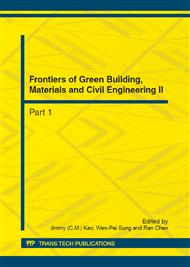p.1113
p.1119
p.1123
p.1129
p.1134
p.1138
p.1143
p.1148
p.1152
Smoke Control Models in Building Fire: A Literature Review
Abstract:
The smoke control is of great importance for the life safety of the occupants in the building fire. Many analytical models have been studied for the design of smoke control. The objective of the article is to bring several numerical simulation models about building fire and smoke movement. There are generally three kinds of different models, which are net model, zone model and field model. The characteristics and weak points of each category are discussed, indicating that each model might be applicable to different building fire scenarios.
Info:
Periodical:
Pages:
1134-1137
Citation:
Online since:
August 2012
Authors:
Keywords:
Price:
Сopyright:
© 2012 Trans Tech Publications Ltd. All Rights Reserved
Share:
Citation:


